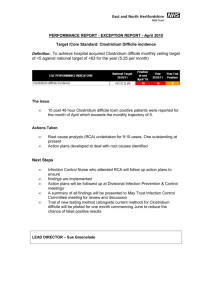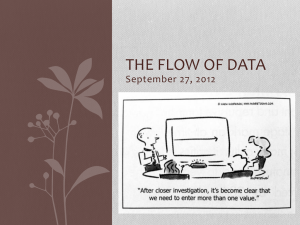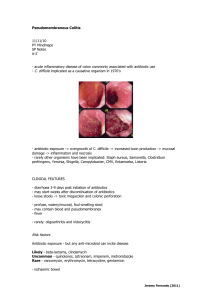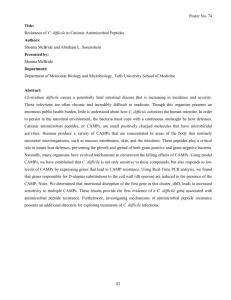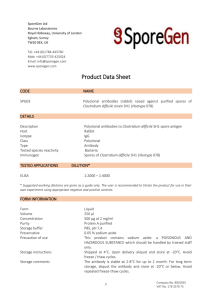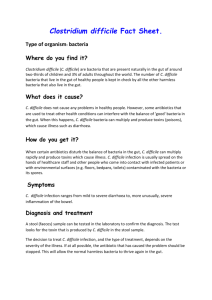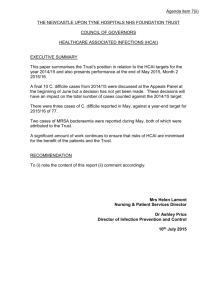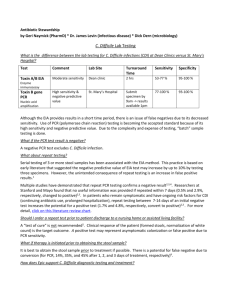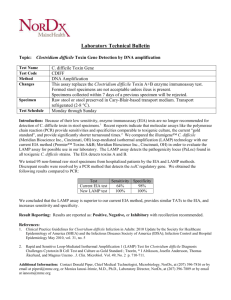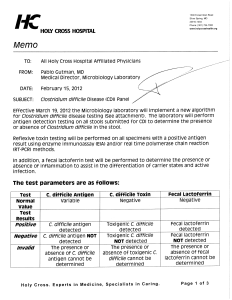Poster Cardiff_GD
advertisement
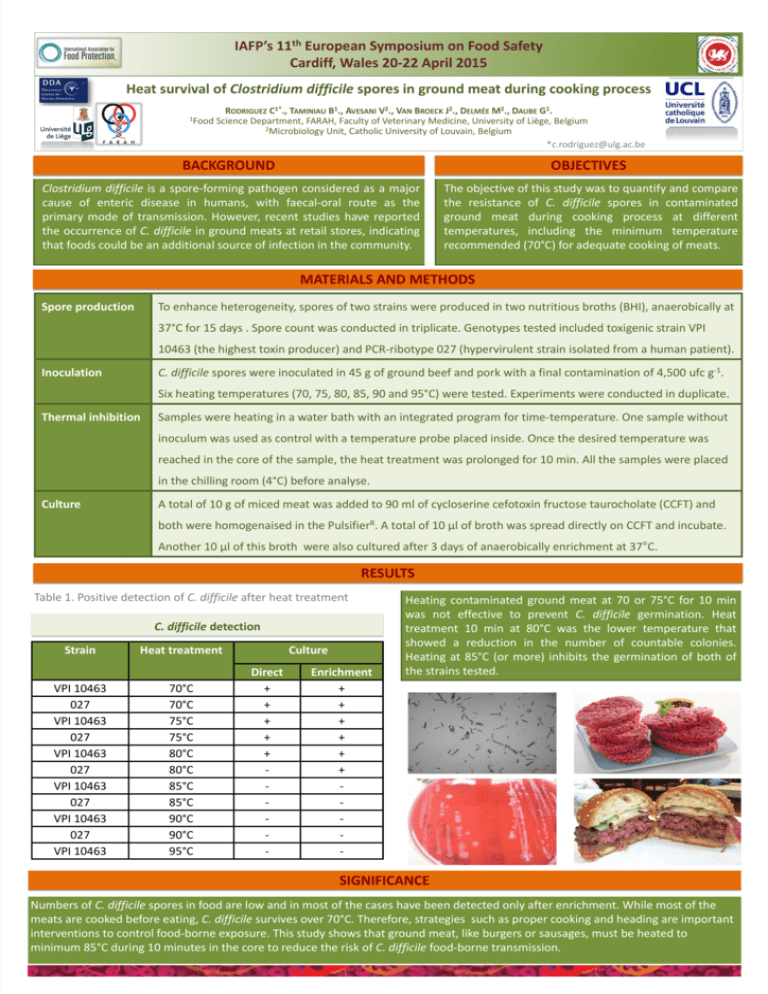
IAFP’s 11th European Symposium on Food Safety Cardiff, Wales 20-22 April 2015 Heat survival of Clostridium difficile spores in ground meat during cooking process RODRIGUEZ C1*., TAMINIAU B1., AVESANI V2., VAN BROECK J2., DELMÉE M2., DAUBE G1. 1Food Science Department, FARAH, Faculty of Veterinary Medicine, University of Liège, Belgium 2Microbiology Unit, Catholic University of Louvain, Belgium *c.rodriguez@ulg.ac.be BACKGROUND OBJECTIVES Clostridium difficile is a spore-forming pathogen considered as a major cause of enteric disease in humans, with faecal-oral route as the primary mode of transmission. However, recent studies have reported the occurrence of C. difficile in ground meats at retail stores, indicating that foods could be an additional source of infection in the community. The objective of this study was to quantify and compare the resistance of C. difficile spores in contaminated ground meat during cooking process at different temperatures, including the minimum temperature recommended (70°C) for adequate cooking of meats. MATERIALS AND METHODS Spore production To enhance heterogeneity, spores of two strains were produced in two nutritious broths (BHI), anaerobically at 37°C for 15 days . Spore count was conducted in triplicate. Genotypes tested included toxigenic strain VPI 10463 (the highest toxin producer) and PCR-ribotype 027 (hypervirulent strain isolated from a human patient). C. difficile spores were inoculated in 45 g of ground beef and pork with a final contamination of 4,500 ufc g-1. Inoculation Six heating temperatures (70, 75, 80, 85, 90 and 95°C) were tested. Experiments were conducted in duplicate. Thermal inhibition Samples were heating in a water bath with an integrated program for time-temperature. One sample without inoculum was used as control with a temperature probe placed inside. Once the desired temperature was reached in the core of the sample, the heat treatment was prolonged for 10 min. All the samples were placed in the chilling room (4°C) before analyse. Culture A total of 10 g of miced meat was added to 90 ml of cycloserine cefotoxin fructose taurocholate (CCFT) and both were homogenaised in the PulsifierR. A total of 10 μl of broth was spread directly on CCFT and incubate. Another 10 μl of this broth were also cultured after 3 days of anaerobically enrichment at 37°C. RESULTS Table 1. Positive detection of C. difficile after heat treatment C. difficile detection Strain VPI 10463 027 VPI 10463 027 VPI 10463 027 VPI 10463 027 VPI 10463 027 VPI 10463 Heat treatment 70°C 70°C 75°C 75°C 80°C 80°C 85°C 85°C 90°C 90°C 95°C Culture Direct + + + + + - Enrichment + + + + + + - Heating contaminated ground meat at 70 or 75°C for 10 min was not effective to prevent C. difficile germination. Heat treatment 10 min at 80°C was the lower temperature that showed a reduction in the number of countable colonies. Heating at 85°C (or more) inhibits the germination of both of the strains tested. SIGNIFICANCE Numbers of C. difficile spores in food are low and in most of the cases have been detected only after enrichment. While most of the meats are cooked before eating, C. difficile survives over 70°C. Therefore, strategies such as proper cooking and heading are important interventions to control food-borne exposure. This study shows that ground meat, like burgers or sausages, must be heated to minimum 85°C during 10 minutes in the core to reduce the risk of C. difficile food-borne transmission.
